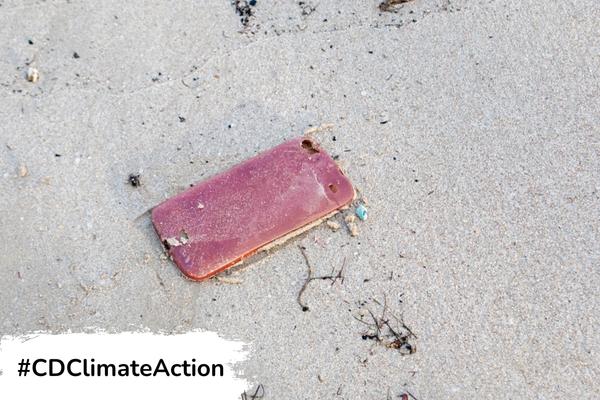Insights
INSIGHTS
All Topics
The best environmentally-friendly technology for charities
27 Mar 2023by Joe Lepper
There is plenty of cost-effective technology that charities can start using to help tackle climate change - in this article, we explore the best options
CHECK OUT THE ’CLIMATE ACTION’ HUB!
Charities should be at the forefront of efforts to protect the planet as part of their environmental, social, and governance (ESG) plans.
But evidence has revealed many have plenty more to do to combat the impact of climate change.
A report by Investor Update in 2022 revealed that charities are behind the private sector in developing strategies around climate change. Too often this “is seen from a basic lens such as recycling” said one charity representative surveyed.
One barrier for charities is likely to be cost, as they battle the cost-of-living crisis and consider the money needed to implement green tech solutions across their organisation to be too much.
Those facing such barriers should be aware that funding has been made available by the UK government to help charities be more energy efficient.
The government in its 2023 spring budget allocated £100 million in extra funding to support the work of charities. This includes a focus on “providing investment in energy efficiency measures”. This money will help charities to not only tackle climate change but also “reduce future operating costs”, said the government.
Dormant Assets Scheme money, which uses unclaimed bank and building society assets for good causes, is also available to help charities improve their energy efficiency. In 2023, a £31 million package of funding was launched through the scheme by the government for charities to “retrofit premises with cleaner, greener, and more efficient energy systems, such as new boilers or heat pumps, solar panels, and new lighting”.
In addition, there are effective and cheap measures they can take now to ensure they are environmentally friendly. Here we detail how charities can reduce their carbon footprint, while considering that green tech is not a perfect solution and can still leave its mark on the planet.
Zoom and digital meetings
Especially since the COVID-19 pandemic lockdowns, charities and other organisations have seen the benefits of staging digital meetings, using popular video conferencing tools such as Zoom and Microsoft Teams.
These bring huge organisational benefits in reducing the time involved in meetings, and also have an environmental impact by cutting participants’ commute time.
The same ethos is taking place in event planning, with webinars and conferences already taking place as hybrid (digital and in-person events), further cutting down on the need for transport. This is especially the case where air travel is involved.
A look at the carbon dioxide emissions involved when comparing the carbon footprint of the technology involved in a Zoom call compared to a flight from New York to San Francisco further underlines this. Research has found that a Zoom call generates 4 kg of carbon dioxide when also considering any commuting time to an office involved. The call itself generates 0.0045 kg of carbon dioxide. In contrast the afore-mentioned flight would create 68 kg of carbon dioxide.
Paperless and digital signatures
Travel and paper costs can be further reduced by encouraging digital signatures. This means important documents can be sent, signed, and received electronically, without the need for people to come into an office to see documents, or to send paper versions in the post.
Among digital tools to help charities go paperless is DocuSign, which is a web-based service that allows documents to be uploaded and sent for an electronic signature. This is particularly useful for sending grant applications as well as human resources, finance, and legal documents.
Adobe also offers e-signature options that are backed by a digital certificate. The company stresses that signed PDF documents are “cryptographically bound and secured with a tamper-evident seal”. Adobe says that it has created 95% less environmental impact through e-signatures compared to paper methods.
Both Adobe and Docusign are available at a discount to charities on the Charity Digital Exchange.
Cloud solutions
Storing data to the cloud is another simple way for charities to help the environment by further reducing their reliance on paper as well as the storage costs of keeping paper files on site.
But cloud solutions are not the perfect solution to becoming a greener charity, as the carbon footprint involved in generating and storing data also needs to be considered.
Research has taken place into the environmental pros and cons of using the largest cloud storage providers. For example, this found that by 2019 Google had “arguably done the most to decarbonise its data”, including for its cloud storage. It has achieved this by buying renewable energy across the globe. However, this research noted that in parts of the world with little to no renewable energy installations, Google’s data centres still rely on fossil fuels.
Digitising backlog projects
Many charities are decades, even centuries old, and hold a raft of data and information of historical and contemporary importance. Instead of relying on paper records, many are looking at carrying out ambitious digitisation backlog projects to create huge online archives. Being less reliant on physical records could help improve the organisation’s resilience to climate change.
Among recent examples has been the UK’s oldest children’s charity Coram which has been digitising its records dating back to 1739. This was aided by National Lottery funding as it looked to digitise more than 100,000 pages of paper records.
Click above to receive the latest sustainability content straight to your inbox
Click above to receive the latest sustainability content straight to your inbox
Joe Lepper
More on this topic
Related Content
Recommended Products
Our Events
Charity Digital Academy
Our courses aim, in just three hours, to enhance soft skills and hard skills, boost your knowledge of finance and artificial intelligence, and supercharge your digital capabilities. Check out some of the incredible options by clicking here.





















